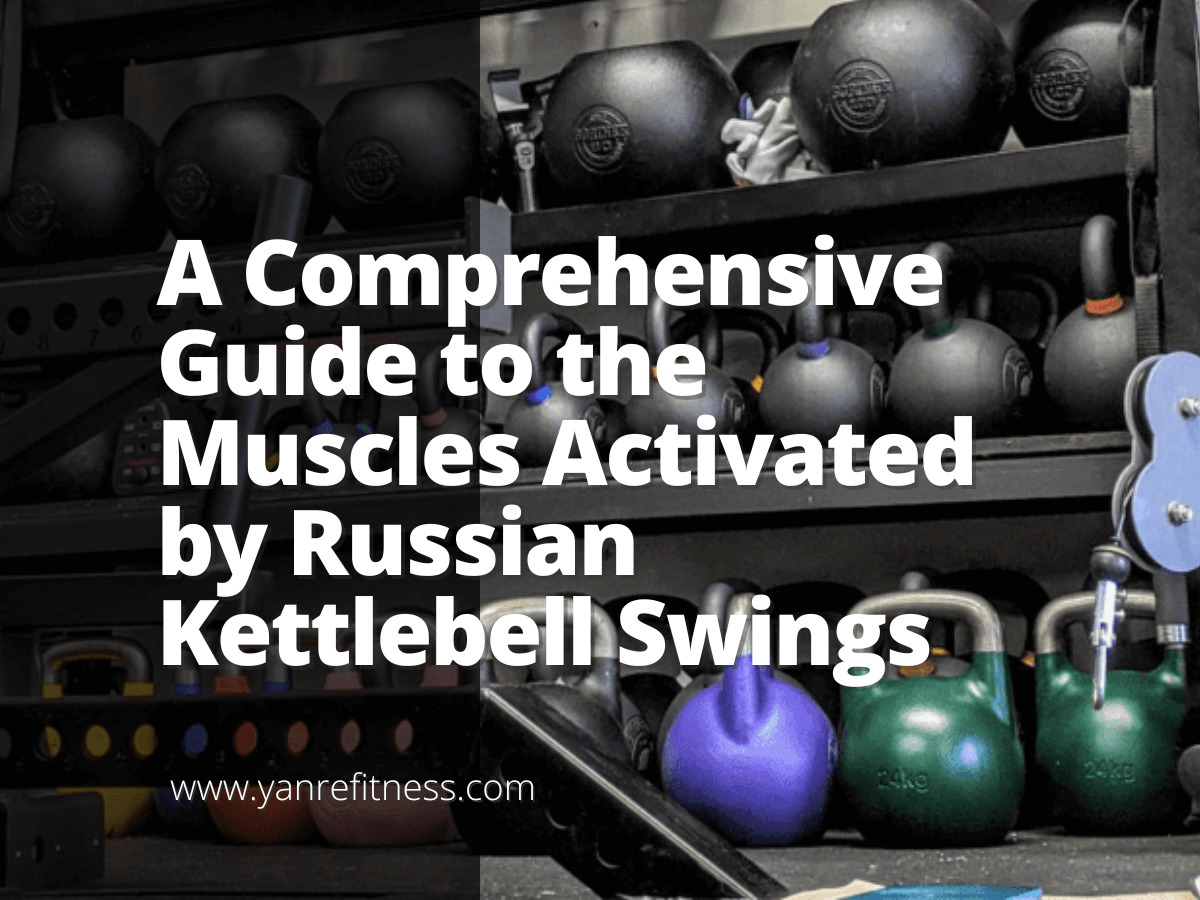Have you ever wondered, “What muscles do Russian kettlebell swings work?” It’s a valid question for anyone looking to understand the impact of this exercise on their body.
With years of expertise in fitness, we offer reliable and valuable insights into the mechanics and benefits of various exercises, including kettlebell swings.
It’s essential to know what muscles Russian kettlebell swings work to effectively incorporate them into your workout for maximum benefits and safety.
In this guide, you will learn about the primary and secondary muscles engaged during Russian kettlebell swings, understand the exercise’s benefits, and receive practical tips on performing them safely and efficiently.
Keep reading to enhance your workout knowledge and technique!
Table of Contents
- 1. Understanding Muscle Engagement
- 2. Basic Mechanics of Russian Kettlebell Swings
- 3. Benefits of Incorporating Russian Kettlebell Swings
- 4. Primary Muscles Worked
- 5. Secondary (Stabilizer) Muscles Engaged
- 6. Safety Tips and Best Practices
- 7. Incorporating Russian Kettlebell Swings into Your Workout
- Conclusion
1. Understanding Muscle Engagement
Muscle engagement during any exercise is a vital aspect to understand for maximizing efficiency and preventing potential injuries. When it comes to Russian kettlebell swings, it’s essential to comprehend the muscle groups activated to enhance the exercise’s effectiveness and safety.
The Russian kettlebell Swing is a powerhouse of an exercise that primarily targets the posterior chain muscles— a group of muscles running along the backside of your body. Through understanding and conscious practice, the Russian kettlebell Swing can indeed become a cornerstone of your strength and conditioning routine.
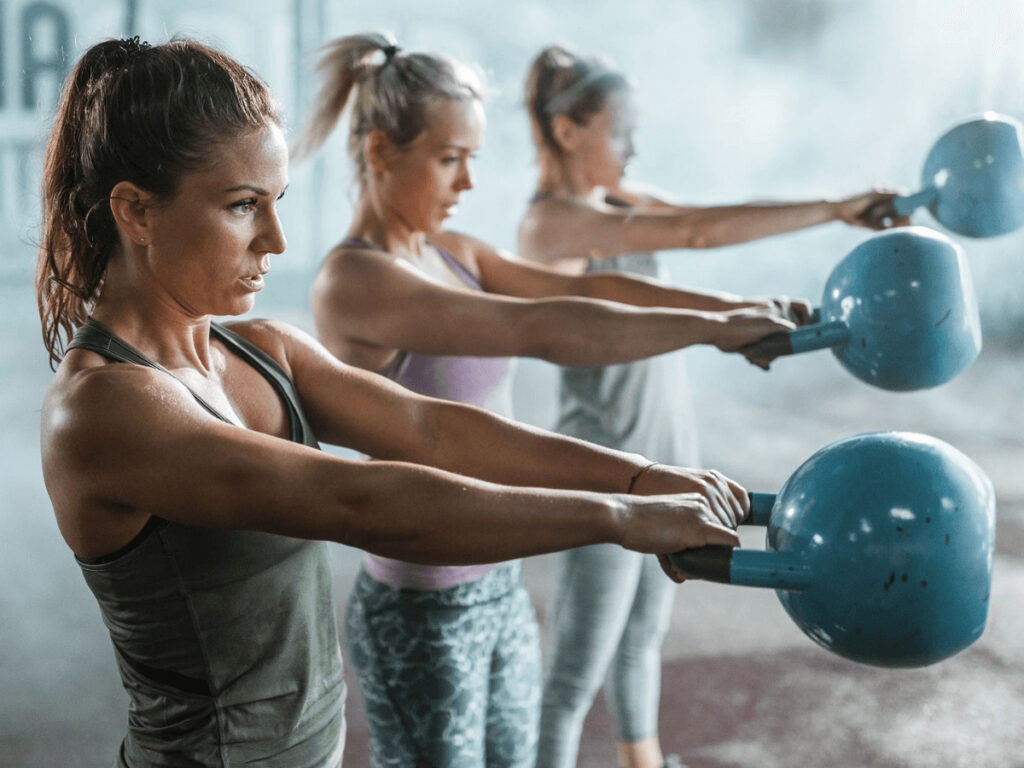
2. Basic Mechanics of Russian Kettlebell Swings
Before diving into the nitty-gritty of the Russian kettlebell Swing’s mechanics, it’s imperative to grasp its foundational elements that guarantee a safe and effective exercise session.Here are the core components of the basic mechanics, each playing a pivotal role in ensuring a successful kettlebell swing:
Starting Position Fundamentals
The starting position of the Russian kettlebell Swing is integral to the exercise’s success and safety. Initially, the kettlebell should be placed slightly ahead of you, allowing for a forward reach. This starting position ensures that you are leaning forward slightly, with your hips hinged, knees bent, and your spine in a neutral position.
In the starting position, your feet should be positioned slightly wider than shoulder-width apart, providing a stable base. Gripping the kettlebell with both hands, your arms should extend directly out in front of you. This foundational stance is pivotal as it sets the stage for a powerful and safe swing.
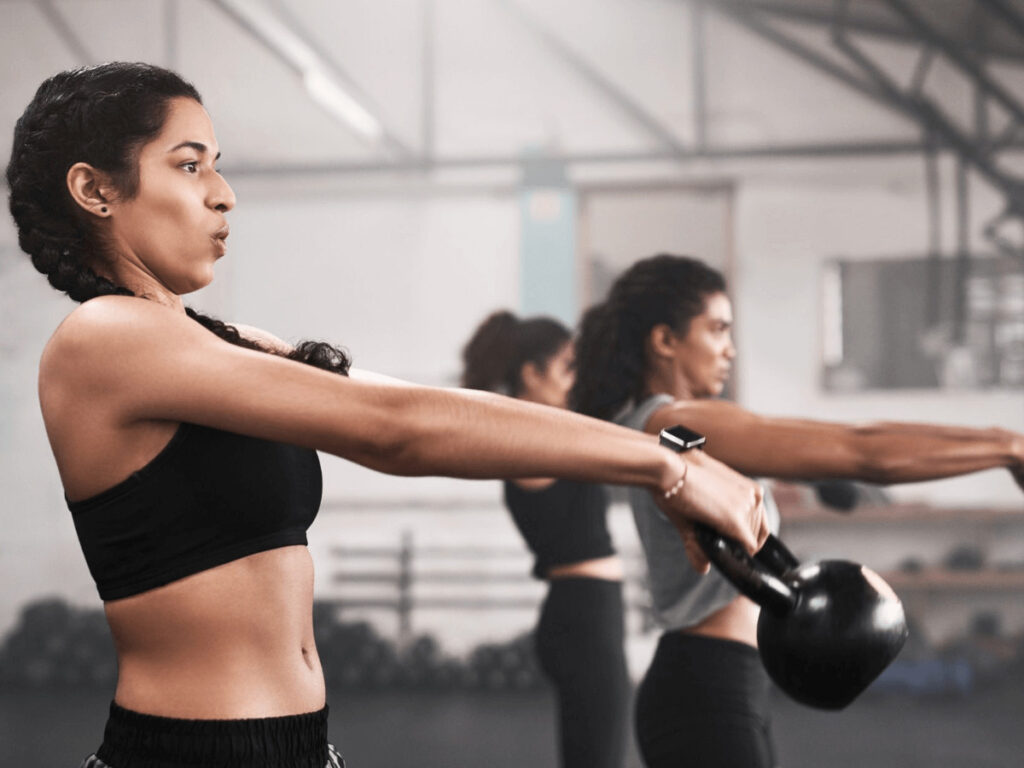
Power Generation Phase
The power generation phase is where the magic happens. For instance, in this stage, the emphasis is on generating explosive power through your hips to drive the kettlebell upwards. The movement begins with a powerful hip hinge; as you thrust your hips forward, the kettlebell will naturally begin to ascend. This hip drive is crucial for generating the necessary power for the swing without overtaxing the arms and shoulders.
The coordinated effort of your glutes, hamstrings, and lower back muscles during the power phase provides the explosive strength required. Engaging your core throughout the movement further stabilizes your body, allowing for a controlled yet powerful swing. The key here is to focus on moving efficiently and fluidly, with the hip drive being the central force propelling the kettlebell.
The Overhead Lockout (or Top of the Swing)
Upon reaching the overhead lockout or the top of the swing, your body should form a straight line, with the kettlebell extended overhead. At this point, it’s vital to ensure that your arms, spine, and hips are aligned, with your glutes and core actively engaged to maintain stability. This alignment is crucial for preventing unnecessary strain on your lower back and shoulders.
During the overhead lockout, it is also essential to keep your shoulders down and back, engaging the lats and traps to support the weight of the kettlebell. Mastering the overhead lockout ensures that you are effectively engaging the targeted muscle groups while protecting your joints and spine from undue stress.
Downswing and Reset
The downswing and reset phase of the Russian kettlebell Swing is as important as the upward movement. This phase requires a controlled, deliberate motion, bringing the kettlebell back down while preparing your body for the next swing. During the downswing, it’s crucial to maintain engagement in your core and lats, providing stability and control as the kettlebell descends.
As the kettlebell approaches the lower part of the movement, you’ll need to hinge at your hips again, bending your knees slightly while keeping your back straight. By focusing on a controlled downswing and proper reset, you ensure that each swing is powerful and efficient, maximizing the exercise’s benefits while minimizing the risk of injury.
3. Benefits of Incorporating Russian Kettlebell Swings
Understanding and appreciating the myriad benefits of Russian kettlebell swings is fundamental for fitness enthusiasts and bodybuilders looking to diversify and intensify their workout routines. These dynamic movements offer unique advantages for holistic physical development and conditioning.
- Full-Body Workout: Russian kettlebell swings are renowned for providing a comprehensive full-body workout. Engaging multiple major muscle groups simultaneously, they foster not only muscle development but also promote coordination and balance. The swinging motion activates your lower, middle, and upper body, making it an excellent choice for those seeking efficient, full-body engagement.
- Boosted Cardiovascular Endurance: While being primarily a strength-training exercise, the dynamic nature of kettlebell swings also provides substantial cardiovascular benefits. The rapid and repetitive movement increases your heart rate, helping improve cardiovascular endurance and overall heart health.
- Enhanced Power and Strength: The explosive hip thrust involved in the swing plays a pivotal role in building power and strength, particularly in the posterior chain. This development is crucial for improving performance in various sports and daily activities that require lifting or sudden bursts of energy.
- Fat Loss and Metabolism Boost: Accorrding to Boxrox, incorporating kettlebell swings into your routine aids in burning calories and fat, thanks to its high-intensity nature. The exercise has been shown to have a positive impact on metabolism, assisting in weight management and promoting lean muscle mass.
- Improved Flexibility and Stability: The controlled movement of the swing necessitates a harmonious work between muscle groups, thereby enhancing your body’s overall flexibility and stability. The exercise also aids in strengthening the core, which is foundational for good posture and preventing back pain.
With consistent practice, you’ll likely notice significant improvements in strength, endurance, and body composition, making it a valuable addition to any fitness enthusiast’s or bodybuilder’s toolkit.
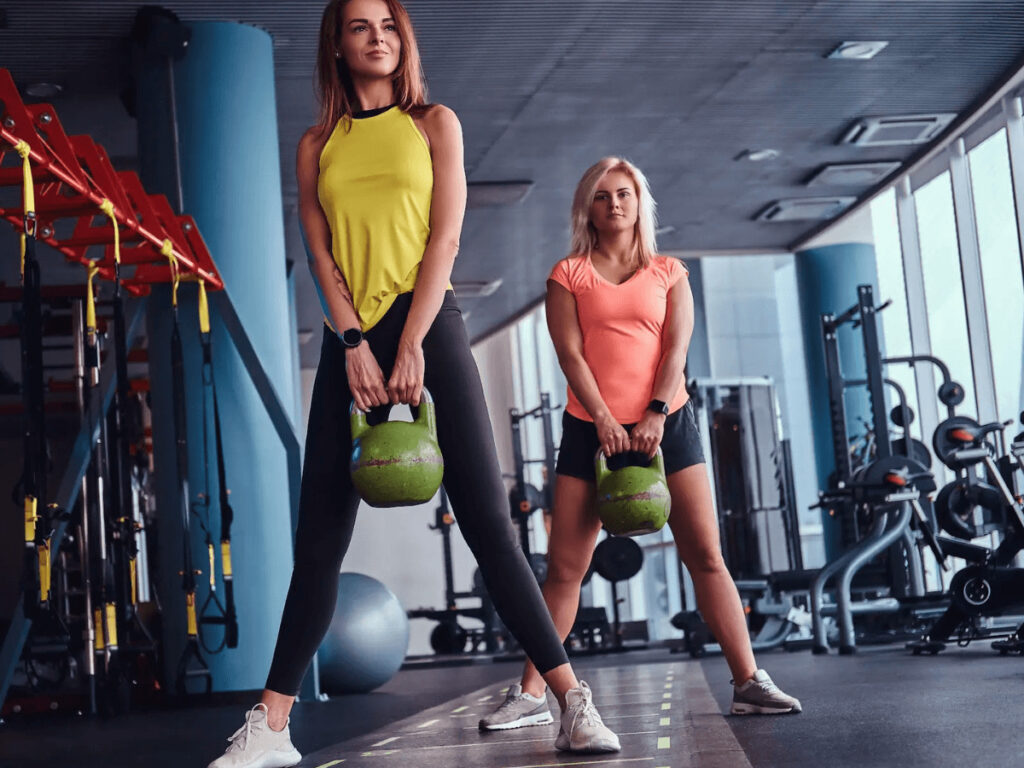
4. Primary Muscles Worked
Russian kettlebell swings offer a robust workout, targeting various primary muscles. Gaining insight into these engaged muscles is crucial for anyone looking to maximize the effectiveness of their kettlebell swing routine while ensuring balanced muscle development.
Posterior Chain Activation
The posterior chain, referring to the group of muscles on the backside of the body, is profoundly engaged during the Russian kettlebell swings. According to Very Well Fit, the exercise primarily targets the glutes, hamstrings, and the erector spinae in the lower back. The glutes, or gluteal muscles, are responsible for hip extension, playing a significant role in the upward phase of the swing.
Hamstrings, located at the back of your thighs, work synergistically with the glutes to extend the hips. They also aid in bending the knees, providing stability and support during the exercise. The erector spinae, a set of muscles running along your spine, works diligently to maintain an upright position while preventing the spine from rounding, crucial for protecting the lower back during the swinging motion.
Core Musculature
The core is engaged intensely during Russian kettlebell swings, providing the necessary stability and balance for the dynamic movement. The rectus abdominis, obliques, and the transverse abdominis collectively participate throughout the exercise, creating a solid base that allows for powerful swings while safeguarding the spine.
The rectus abdominis, often referred to as the ‘abs’, supports the spine as the kettlebell is swung forward and upward. Obliques, located on the sides of the abdomen, play a crucial role in stabilizing the torso, while the deep-seated transverse abdominis provides additional stability, particularly during the downswing phase of the exercise.
Shoulder and Upper Back
While the shoulders and upper back are not the primary drivers in the kettlebell swing, they play a pivotal supportive role. The deltoids in the shoulders and the trapezius in the upper back are engaged to control the kettlebell’s path, maintaining a straight line as it moves upward and downward.
The deltoids assist in stabilizing the shoulder joint, preventing unnecessary movement that could lead to injury. The trapezius helps in maintaining an upright posture, supporting the spine and shoulders during the swinging motion. These muscles work together to ensure a smooth, controlled movement, allowing for a safe and effective exercise.
| Muscle Group | Benefits of Russian Kettlebell Swings |
| Glutes (Buttocks) | Activation and strengthening for explosive hip extension and power. |
| Hamstrings | Improved posterior chain development, aiding in hip stability. |
| Core (Abdominals) | Strengthening of the core muscles for stability and balance. |
| Quadriceps (Front Thighs) | Engagement during the swing’s upward phase for leg strength. |
| Deltoids (Shoulders) | Development of shoulder muscles due to the swinging motion. |
5. Secondary (Stabilizer) Muscles Engaged
While primary muscles do the bulk of the work during Russian kettlebell swings, secondary or stabilizer muscles are equally critical. These muscles provide necessary support and stability, ensuring the correct form and preventing injuries during the intense, explosive exercise.
Forearm and Grip Muscles
The forearm and grip muscles are consistently engaged throughout the kettlebell swing, providing control and stability to the movement of the kettlebell. These muscles include the flexors and extensors of the forearm, which enable you to grip the kettlebell firmly while allowing for the subtle adjustments needed during the swing.
The brachioradialis, a muscle of the forearm, plays a pivotal role in controlling the kettlebell, especially during the downswing. Engaging these muscles not only provides stability but also contributes to developing strong, resilient forearms and a powerful grip, which are valuable assets in various athletic and fitness activities.
Quadriceps
While Russian kettlebell swings are primarily a posterior chain exercise, the quadriceps or the muscles at the front of your thighs, still play a supportive role. For instance, as you initiate the swing, the quadriceps engage to extend the knees, working in conjunction with the glutes and hamstrings to generate the force needed for the kettlebell to ascend.
During the downswing, the quadriceps act as stabilizers, helping control the descent of the kettlebell and preparing the body for the next upward swing. This supportive engagement of the quadriceps contributes to the exercise’s full-body workout nature, promoting balanced muscle engagement and development.
Latissimus Dorsi
The latissimus dorsi, or lats, are substantial muscles in your back playing a crucial role in the stabilization during Russian kettlebell swings. The lats engage in controlling the kettlebell’s trajectory, preventing it from moving too far away from your body and thus reducing stress on your lower back.
As you swing the kettlebell upwards, the lats work to keep it close to your body, providing stability and control. Engaging your lats effectively also helps in maintaining a straight, neutral spine, which is crucial for preventing back strain and injuries during the exercise, making the lats a significant secondary muscle group engaged in the movement.
6. Safety Tips and Best Practices
Ensuring safety while performing Russian kettlebell swings is imperative to prevent injuries and maximize the exercise’s effectiveness. Adopting and consistently practicing the following safety tips and best practices will allow you to harness the full benefits of the exercise while promoting a secure and productive workout environment.
- Maintain a Neutral Spine: Keeping a neutral spine is vital to avoid unnecessary pressure on your back during kettlebell swings. A neutral spine means that your back is straight, and there is a slight natural curve in your lower back. Practicing this posture not only promotes safety but also ensures that the targeted muscles are engaged effectively during exercise.
- Focus on Hip Drive, Not Arms: The power in a kettlebell swing primarily comes from the hips, not the arms. It is crucial to master the hip hinge movement, using your hips to drive the kettlebell up. Your arms should stay relatively straight, acting merely as cables connecting your body to the kettlebell.
- Choose Appropriate Weight: Selecting the right weight is crucial for performing kettlebell swings safely and effectively. If the kettlebell is too light, you might not engage the targeted muscles effectively; if it’s too heavy, you risk straining your muscles or using improper form. Start with a weight that allows you to perform the exercise with proper technique, and gradually increase it as you build strength and confidence.
- Engage Core Throughout: Consistently engaging your core during the entire movement of a kettlebell swing provides stability and protects your lower back. A strong, braced core helps in maintaining a neutral spine, supporting the body through the dynamic movement of the swing.
Consistently practicing safe techniques not only maximizes the exercise benefits but also fosters a healthy, long-term relationship with fitness, allowing you to explore and enjoy the myriad rewards that come with a strong, resilient body.
7. Incorporating Russian Kettlebell Swings into Your Workout
Integrating Russian kettlebell swings into your workout is a strategic approach to enhancing your exercise routine’s intensity and effectiveness. This versatile exercise can fit effortlessly into various workout styles, serving multiple fitness goals.
- Versatile Warm-Up: Russian kettlebell swings can be a dynamic start to any workout session. The exercise quickly raises your heart rate, warms up the entire body, and increases blood circulation to various muscle groups.
- HIIT Component: For those engaged in High-Intensity Interval Training (HIIT), kettlebell swings are an invaluable addition. This exercise can be easily integrated into HIIT circuits, providing short bursts of intense effort followed by recovery periods.
- Strength and Endurance Booster: Incorporating kettlebell swings into strength and endurance training sessions can offer remarkable benefits. The exercise significantly engages the core and lower body muscles, promoting strength development and endurance in these areas.
With careful integration and consistent practice, you’ll observe noticeable improvements in your fitness levels, achieving a well-rounded and resilient physique over time.
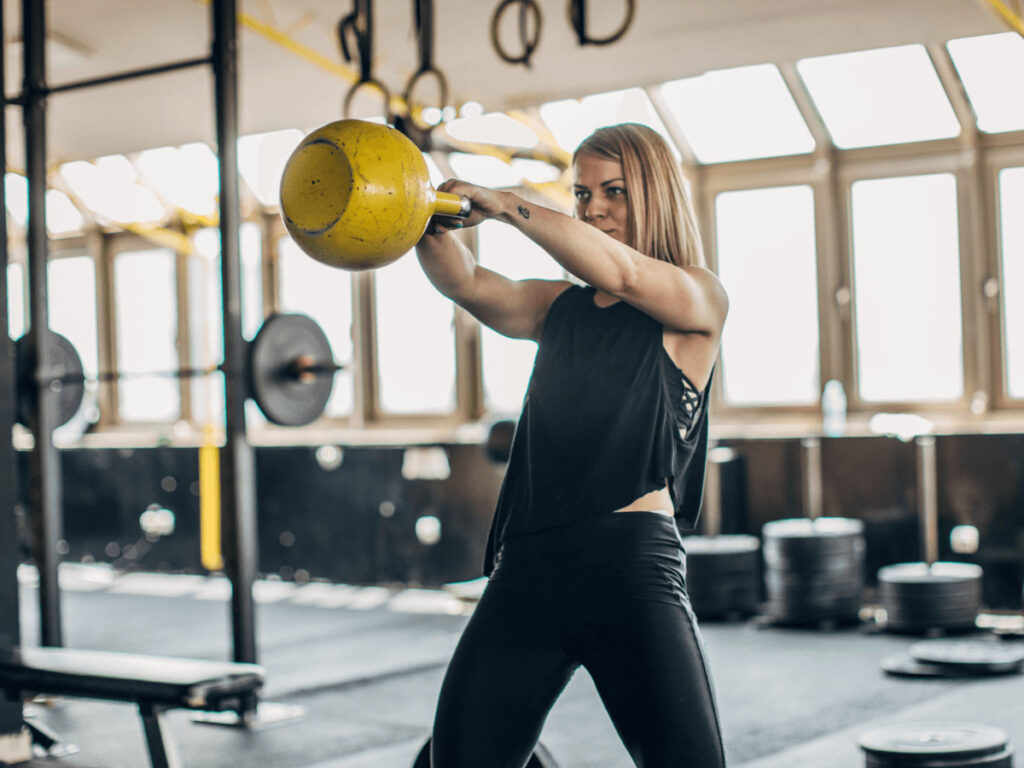
Conclusion
Russian kettlebell swings are a staple in many fitness enthusiasts’ and body builders’ routines due to their effectiveness in engaging multiple muscle groups simultaneously. Understanding the mechanics and muscle engagements of this exercise not only enhances your training efficiency but also helps in preventing injuries through overuse or incorrect form.
For those who aim to either initiate or elevate their kettlebell training, acknowledging and mastering the muscle groups activated by Russian kettlebell swings is paramount. With this knowledge in hand, you can tailor your workout regimes more intelligently, ensuring a balanced, powerful, and safe approach to achieving your fitness goals.
Related articles:

